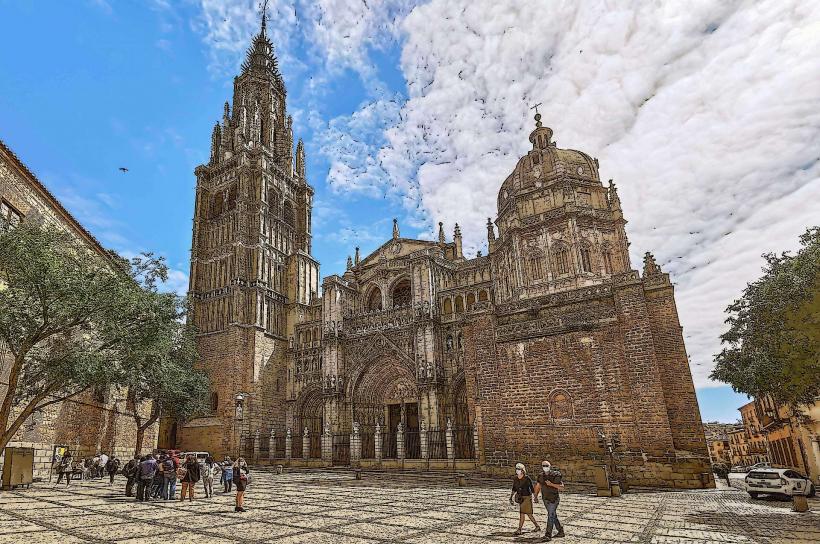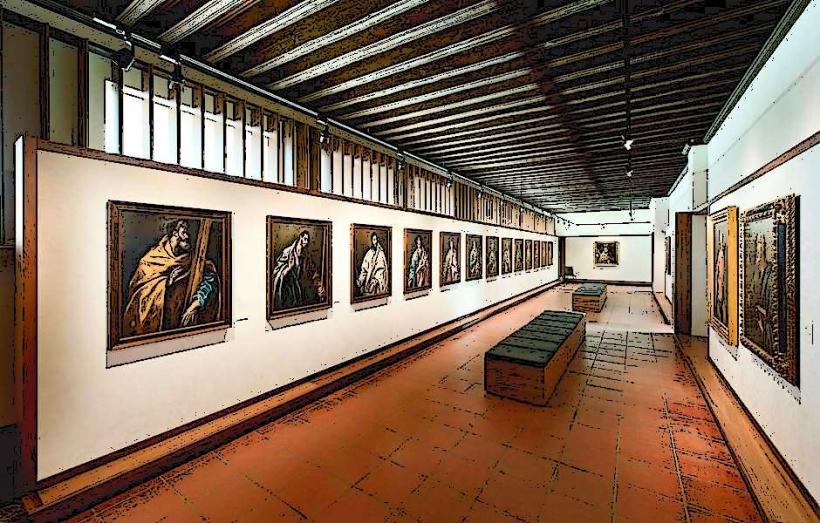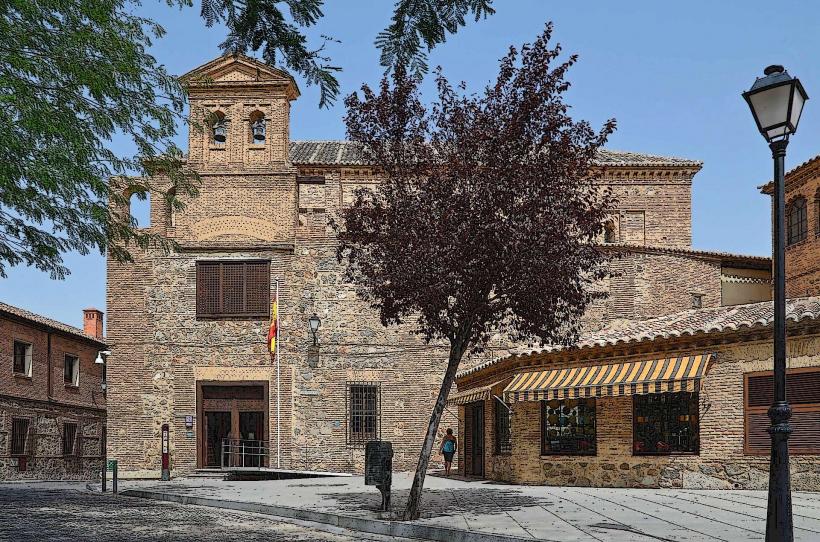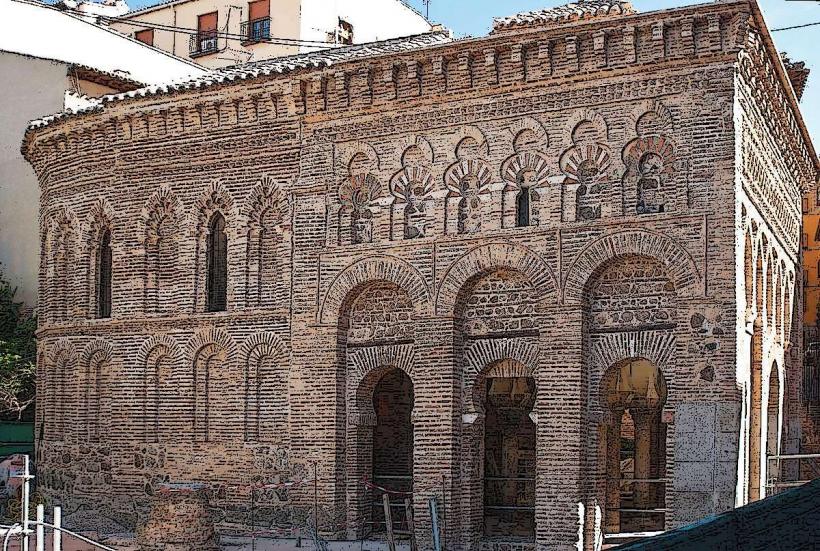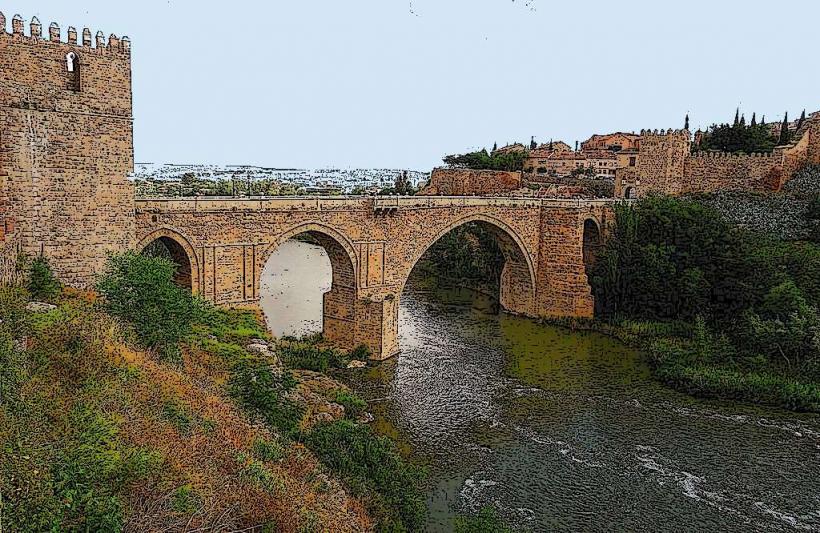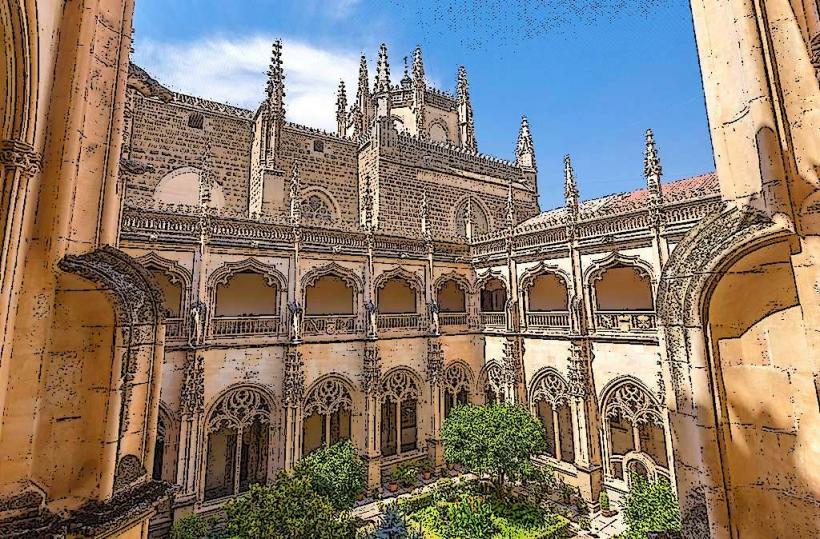Information
City: ToledoCountry: Spain
Continent: Europe
Toledo is a historic city located in central Spain, known for its rich cultural heritage, impressive architecture, and its significant role in Spanish history. Often referred to as the "City of Three Cultures," Toledo has a fascinating history of Christianity, Judaism, and Islam coexisting in the Middle Ages, which is reflected in the city’s diverse architectural styles and cultural influences. Today, it is a UNESCO World Heritage site and remains a popular destination for tourists and history enthusiasts alike.
History and Significance
Toledo's history dates back over two millennia, with evidence of Roman, Visigothic, Islamic, and Christian influence throughout the centuries. It was the capital of Spain for a time during the Visigothic period and later became an important city during the Islamic rule (from the 8th to the 11th century). Following the Reconquista in 1085, when King Alfonso VI captured Toledo from the Moors, the city became an essential hub for Christian religious and intellectual life in Spain.
Toledo played a pivotal role in Spain's Golden Age, particularly during the reign of the Habsburg dynasty. Its art, literature, and architecture flourished during this time. It is also famous for being the home of one of the greatest Spanish painters, El Greco, whose work continues to be celebrated in the city today.
Architectural and Cultural Highlights
Toledo’s historical significance is beautifully represented in its architecture, with Roman, Gothic, Mudejar, Renaissance, and Baroque buildings scattered across the city. The entire old town of Toledo is an architectural treasure, and visitors will find no shortage of fascinating landmarks and sites to explore.
1. Toledo Cathedral (Catedral Primada)
One of Toledo’s most iconic landmarks, the Toledo Cathedral, is a masterpiece of Gothic architecture and one of the most important cathedrals in Spain. Built between 1226 and 1493, it features an impressive façade and a stunning interior filled with intricate stained-glass windows, altarpieces, and artworks by El Greco and Goya. The Cloister, Chapter House, and Treasury are also notable parts of the cathedral, and the tower offers panoramic views of the city.
2. Alcázar of Toledo
The Alcázar is a massive fortress perched on a hilltop overlooking Toledo. Originally built by the Romans and later expanded by the Visigoths, Moors, and Christians, the Alcázar has had various roles throughout history, including serving as a royal palace and military stronghold. Today, it houses the Army Museum and offers insight into Spain's military history, along with magnificent views of the surrounding landscape.
3. El Greco Museum
Toledo is deeply connected with the famous artist El Greco, who spent a significant portion of his life in the city. The El Greco Museum is dedicated to his life and work, showcasing several of his masterpieces, including his well-known "The Burial of the Count of Orgaz". The museum is housed in a historic building that reflects the traditional style of Toledo’s architecture.
4. Synagogue of El Transito
A beautiful example of Mudejar architecture, the Synagogue of El Transito was built in the 14th century and is now home to the Sephardic Museum. The synagogue is notable for its ornate archways, plasterwork, and woodwork, which combine Islamic, Christian, and Jewish artistic traditions. It serves as a reminder of the Jewish community that once thrived in Toledo before their expulsion in the 15th century.
5. Mosque of Christ of the Light
The Mosque of Christ of the Light is one of the best-preserved examples of Moorish architecture in Toledo. Built in the 10th century during the Islamic rule, it combines Islamic and Christian elements, especially after the Reconquista when a Christian chapel was added to the structure. The mosque’s arched doors and ornate stucco work are exquisite examples of Islamic artistry.
6. Puente de San Martin (San Martin Bridge)
One of the most picturesque bridges in Toledo, the Puente de San Martin spans the Tagus River. Built in the Middle Ages, this stone bridge offers spectacular views of the city’s skyline, with the Alcázar and the Cathedral visible in the distance. The bridge is also notable for its Gothic architecture and its historical role in connecting different parts of the city.
7. Monastery of San Juan de los Reyes
This Monastery, built by the Catholic Monarchs Ferdinand and Isabella in the late 15th century, is an impressive example of Gothic architecture with Isabelline influences. It was designed to be a royal mausoleum and a symbol of Spain’s political and religious power during the time of the Catholic Monarchs.
Toledo's Cultural Heritage
The legacy of three cultures—Christian, Jewish, and Islamic—is deeply rooted in Toledo's identity. The city has long been a center of interfaith dialogue, with each of these communities leaving their mark on the city in terms of architecture, art, literature, and science.
Jews: Toledo was a major center of Jewish life and scholarship during the medieval period. The Jewish Quarter, though much smaller today, still holds a wealth of history, and several landmarks, including the Synagogue of El Transito and the Sinagoga del Sta. María la Blanca, reflect the Jewish heritage.
Mudejar Influence: The Mudejar style, which blends Islamic and Christian elements, can be seen in Toledo’s architecture, particularly in buildings like the Synagogue of El Transito and the Mosque of Christ of the Light. This style was a result of Muslim rule in Toledo during the medieval period and is still a prominent feature in the city.
Modern Toledo
Today, Toledo is a popular tourist destination, drawing visitors from around the world who come to admire its rich history, architecture, and artistic heritage. While the city maintains its medieval charm, it is also home to modern amenities, including vibrant shopping streets, cafés, and restaurants offering traditional Castilian cuisine such as marzipan and venison dishes.
Fun Facts
El Greco’s Influence: El Greco spent the latter part of his life in Toledo, where he created some of his most famous works. His unique style, which combined Byzantine, Renaissance, and Mannerist elements, had a lasting impact on the city’s artistic scene.
"City of Three Cultures": Toledo is often referred to as the “City of Three Cultures” because of the coexistence of Muslims, Jews, and Christians throughout much of its history, each of whom contributed to the city’s rich cultural and architectural heritage.
Alcázar’s Role in the Spanish Civil War: During the Spanish Civil War (1936-1939), Toledo’s Alcázar became the site of a famous siege, where nationalist forces held out against Republican troops for several months. The event is a significant chapter in Spain’s 20th-century history.
Conclusion
Toledo is a city where history, culture, and architecture come together in a remarkable way. From its medieval streets and monumental buildings to its rich traditions and artistic heritage, Toledo is a must-visit destination for anyone interested in the fascinating history of Spain. Whether you’re drawn to its Gothic cathedrals, Moorish palaces, or its connection to the famous El Greco, Toledo offers an unforgettable experience that transports you back in time to one of Spain’s most vibrant and diverse cities.

